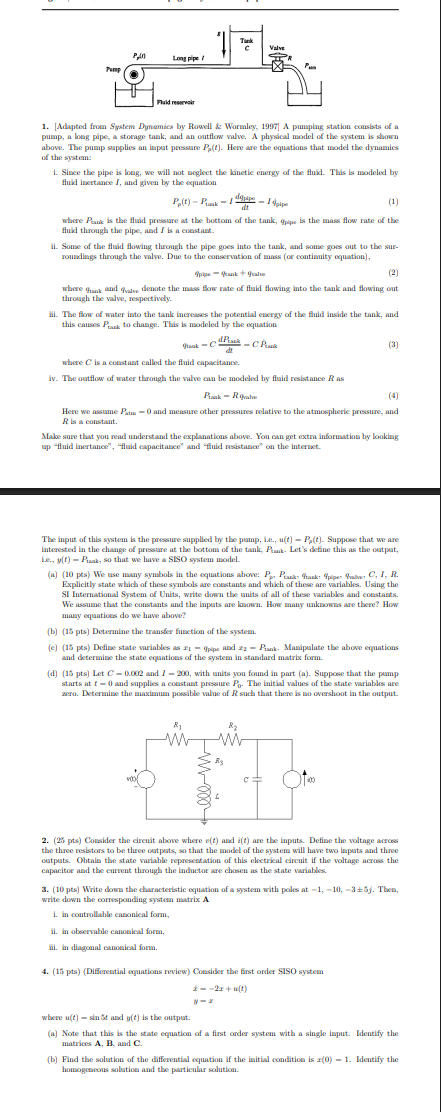Home /
Expert Answers /
Mechanical Engineering /
adapted-from-system-dynamics-by-rowell-amp-wormley-1997-a-pumping-station-consists-of-a-pump-a-pa506
(Solved): [Adapted from System Dynamics by Rowell & Wormley, 1997] A pumping station consists of a pump, a ...
[Adapted from System Dynamics by Rowell & Wormley, 1997] A pumping station consists of a
pump, a long pipe, a storage tank, and an outflow valve. A physical model of the system is shown
above. The pump sapplies an inpat pressure P_(p)(t). Here are the equations that model the dynamics
of the system:
i. Since the pipe is loag, we will not neglect the kinetic energy of the fluid. This is modeled by
fluid inertance I, and given by the equation
P_(p)(t)-P_(takk )=I(dg_(plpe))/(dt)=Ig_(plpm)
where P_(tank ) is the fluid pressure at the bottom of the tank, q_(p)pe is the mass flow rate of the
fluid through the pipe, and I is a constant.
ii. Some of the fluid flowing through the pipe goes into the tank, and some goss out to the sur-
roundings through the valve. Due to the conservation of mass (or continuity equation),
q_(plpe )=q_(sank )+q_(calus )
where g_(taxk ) and g_(value ) denote the mass flow rate of fluid flowing into the tank and flowing out
through the valve, respectively.
iii. The flow of wa